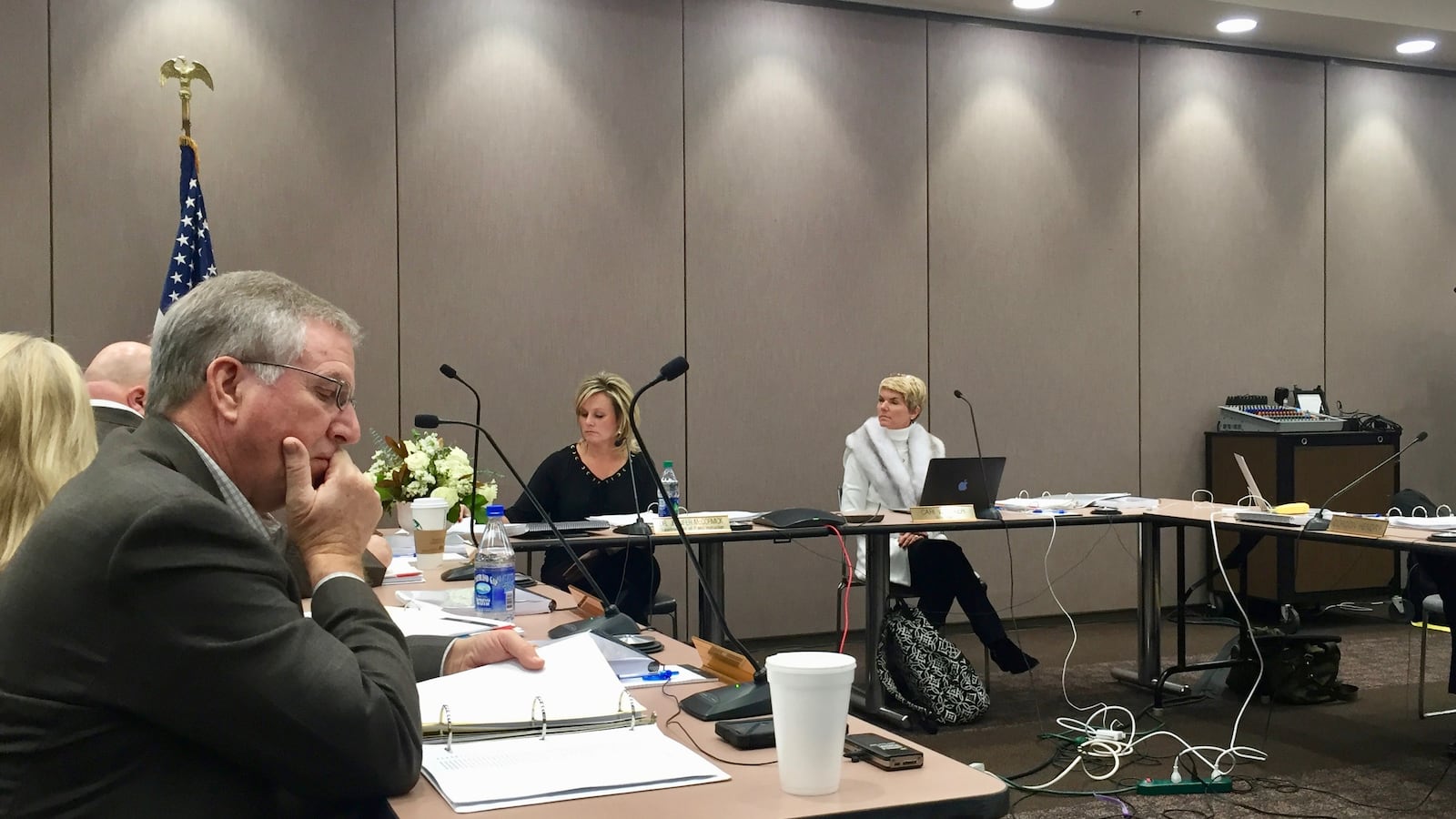Almost two years and three state hearings later, it’s still not clear what action, if any, Indiana education officials will take regarding the long-struggling Hoosier Academy Virtual Charter School.
What Indiana State Board of Education members do know is that they want even more information.

“To move forward … we are going to really have to deep dive into what is the model, what is working well,” said State Superintendent Jennifer McCormick. “There are a lot of big decisions to be made before that time comes.”
The online school received its sixth F from the state last month, after it was asked in 2015 by the Indiana State Board of Education to figure out a plan to improve. Hoosier Academy officials presented their plan in August — but they also came back with the news that they had opened the new Insight School of Indiana, which they said could better serve students who are struggling.
The purpose of the Insight school wasn’t to “let the school avoid accountability,” said Bob Marra, the executive director of the Office of Charter Schools at Ball State University, the group that oversees Hoosier Academies. “It was actually my intention to give more transparency and clarity” around how students were doing, he said.
But board members didn’t necessarily agree with Marra. Steve Yager asked why a new school was even needed when the Hoosier Academy Virtual school could have been altered to provide more support for kids who needed it.
“My concern still remains, and it is that when you start treading new water, you don’t know what’s beneath the surface,” Yager said. “We’ve got to be very, very careful as to the precedent we’re setting.”
Hoosier Academy leaders, as well as leaders of other state virtual schools, have raised the idea that their circumstances should net them some leeway in accountability. Online schools typically face high student turnover, low graduation rates and students coming to school far behind their peers.
In Wednesday’s presentation, Marra pointed to numerous data points that suggest the school would have a much better graduation rate, for example, if students who were credit deficient or those who had left the school but were still counted in the cohort, weren’t counted.
Cynthia Roach, director of testing and accountability for the state board, said there have been conversations about other accountability models that might better fit schools like Damar Charter Academy, which specifically serves students with some of the most severe learning and physical disabilities, or residential treatment facilities that also educate kids, but those are ongoing.
Otherwise, Roach said, the state’s new A-F model should essentially work for everyone else. She didn’t think the difficulties Hoosier Academy says it’s facing qualify them for an A-F break. Critics of alternate accountability for virtual schools say traditional schools, particularly urban schools, see many of the same challenges.
“With the way we’ve got the model currently set up, even if (schools) are not passing (ISTEP), they should be growing those kids,” Roach said. “I have no real issue holding them to the same standards.”
Indiana only has one grading system for K-12 schools (there’s a separate model for adult charter high schools). Even if schools get designated as alternative schools and have a mission to serve specific groups of kids, they are either counted along with another district school or get a grade of their own.
Insight School of Indiana won’t test students until this year, which means results and a letter grade won’t be available for almost a year. At Hoosier Virtual, even test score growth data is low, at what could be considered a D, while test passing rates could be considered an F.
Opening up separate schools to give extra services is something K12, the school’s management company, has done in other states, including Arizona and Ohio, said John Marske, president of Hoosier Academies’ board of directors.
“Rather than recreate the wheel, we’re using a model that is working in other states,” Marske said.
But it’s not clear it’s even working in those states.
In Arizona, the Insight Academy is considered an “alternative school” by the state, which means it serves an at-risk population, including students who are behind, those with disruptive behavior and those in the juvenile justice system.
Even so, the school received a C grade for 2014, the most recent data available from the Arizona Department of Education. Arizona Virtual Academy got a B in 2014. The Ohio Insight Academy doesn’t have an overall grade, but for all the “component” grades, in areas such as achievement, test score growth and graduation rate, the school received Fs. Ohio Virtual Academy received a D, F and F in those areas.
Hoosier Academy Virtual is set to come back to the board in this spring. Marra said there won’t be any new test scores yet, but they’ll continue discussion and go over more information. McCormick, like Yager, said she worries that the board’s process dealing with Hoosier Academies could set a precedent, and she doesn’t want other schools to think they’re getting special treatment.
“It’s going to be a difficult decision because obviously this is not an overnight issue — we don’t want to put students in a bad situation,” McCormick said. Virtual charter schools are “not traditional public schools, but they are public schools, so we do need to watch that. I think that’s our responsibility as a department, and I think that’s our responsibility as a state board of education.”

